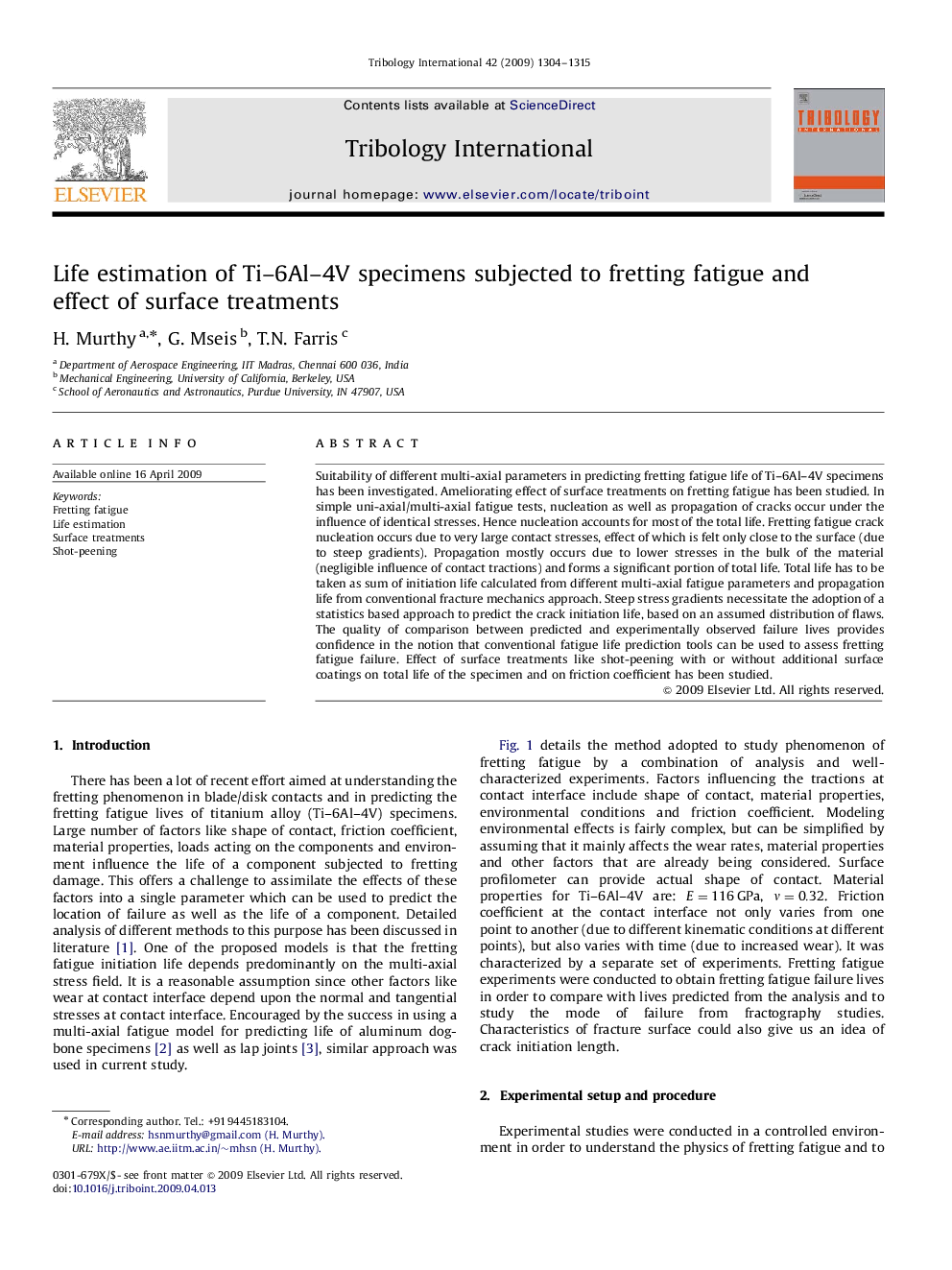| Article ID | Journal | Published Year | Pages | File Type |
|---|---|---|---|---|
| 616130 | Tribology International | 2009 | 12 Pages |
Suitability of different multi-axial parameters in predicting fretting fatigue life of Ti–6Al–4V specimens has been investigated. Ameliorating effect of surface treatments on fretting fatigue has been studied. In simple uni-axial/multi-axial fatigue tests, nucleation as well as propagation of cracks occur under the influence of identical stresses. Hence nucleation accounts for most of the total life. Fretting fatigue crack nucleation occurs due to very large contact stresses, effect of which is felt only close to the surface (due to steep gradients). Propagation mostly occurs due to lower stresses in the bulk of the material (negligible influence of contact tractions) and forms a significant portion of total life. Total life has to be taken as sum of initiation life calculated from different multi-axial fatigue parameters and propagation life from conventional fracture mechanics approach. Steep stress gradients necessitate the adoption of a statistics based approach to predict the crack initiation life, based on an assumed distribution of flaws. The quality of comparison between predicted and experimentally observed failure lives provides confidence in the notion that conventional fatigue life prediction tools can be used to assess fretting fatigue failure. Effect of surface treatments like shot-peening with or without additional surface coatings on total life of the specimen and on friction coefficient has been studied.
